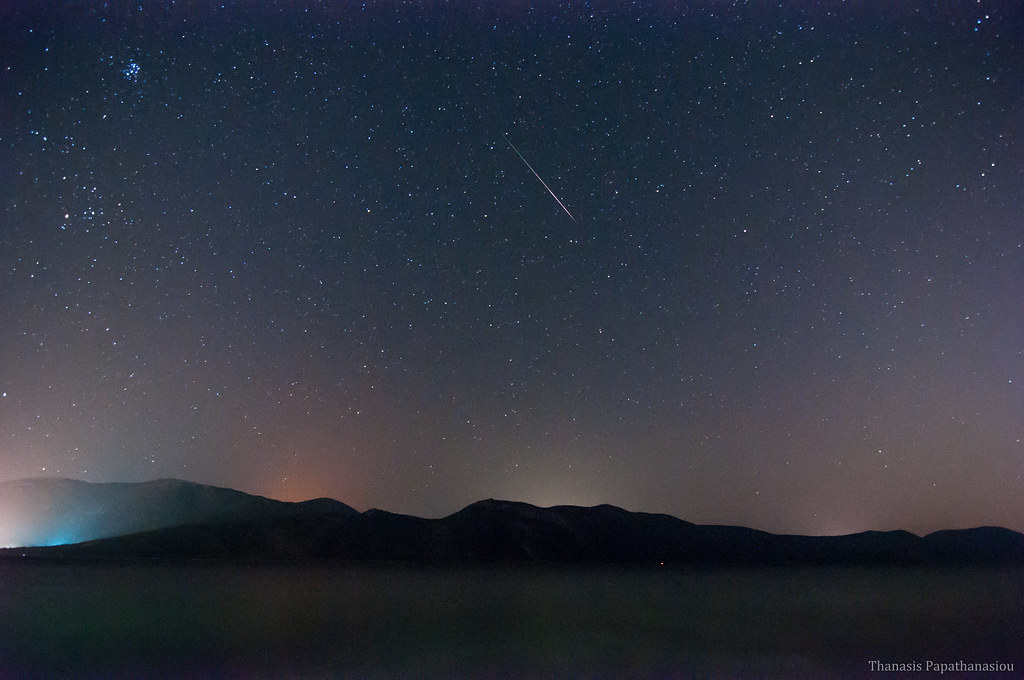

By Asmita - Aug 12, 2025
The Perseid meteor shower, originating from comet 109P/Swift-Tuttle, peaks on the night of August 12-13, 2025, presenting bright meteors speeding at 37 miles per second. Viewing tips include finding a dark, open area away from light pollution, dressing warmly, reclining for comfort, letting eyes adjust to darkness, and watching after midnight for optimal visibility, aiming to view around 2-3 a.m. local time. Observers should scan the entire sky, anticipate fireballs, and embrace the gradual display with patience and maybe even companions for a mesmerizing experience despite moonlight interference.

Perseid meteor via Flickr
LATEST
The strongest meteor shower of the summer, known as the Perseids, captivates stargazers each year with its dazzling display of shooting stars. The Perseids originate from the debris trail left by comet 109P/Swift-Tuttle, and the meteors appear to radiate from the constellation Perseus. This meteor shower is active annually from mid-July to early September and reaches its peak in mid-August. In 2025, the peak occurs during the night of August 12-13, with ideal viewing conditions typically between midnight and dawn. The Perseids are known for their bright, swift meteors streaking the sky at speeds up to 37 miles per second, creating an impressive spectacle especially in rural areas with little light pollution. Under optimal conditions, observers can see up to 50-100 meteors per hour, though the 2025 peak will be slightly impaired by a bright waning gibbous moon.
To watch the Perseid meteor shower effectively, preparation is key. First, find a viewing location away from urban light pollution where the night sky is dark and unobstructed by trees or buildings. Light pollution and moonlight significantly reduce the number of meteors visible, so selecting a remote spot enhances your chances. Dress comfortably and in layers, as early morning hours can be chilly even in summer. Bring a reclining chair or a ground pad to lie back comfortably and keep your gaze upward for extended periods. Avoid using telescopes or binoculars, as they limit your field of vision—meteors can appear anywhere across the sky and are best seen with the naked eye. Lastly, allow your eyes about 30 minutes to adjust to the darkness and avoid looking at bright screens or lights which hamper night vision.
Timing also plays an important role in maximizing your meteor shower experience. The best time to view the Perseids is generally after midnight until just before dawn when the radiant point in the Perseus constellation rises higher in the sky. For 2025, the highest activity is expected around 2-3 a.m. local time on August 13. Early observation is encouraged as meteors may begin to appear soon after dusk, but moonlight will interfere after a few hours. To reduce moon interference, position yourself so that the moon is behind you, facing away from its glare. Check local weather forecasts before heading out; clear, cloudless skies are essential for a good show. Patience is important, as meteor showers are gradual events rather than continuous fireworks.
During the meteor shower, try to keep your focus broad rather than staring at the radiant. Meteors streak away from the radiant point but appear throughout the sky. Relax your eyes and stay alert for quick flashes of light traveling in varying directions and speeds. Some Perseid meteors are bright fireballs with long-lasting trails, adding extra excitement to the viewing. Bring a thermos of warm beverage for comfort, and consider inviting friends or family for a memorable night under the stars. Despite some challenges posed by moonlight in 2025, the Perseid meteor shower remains a spectacular celestial event to enjoy with proper preparation and timing.